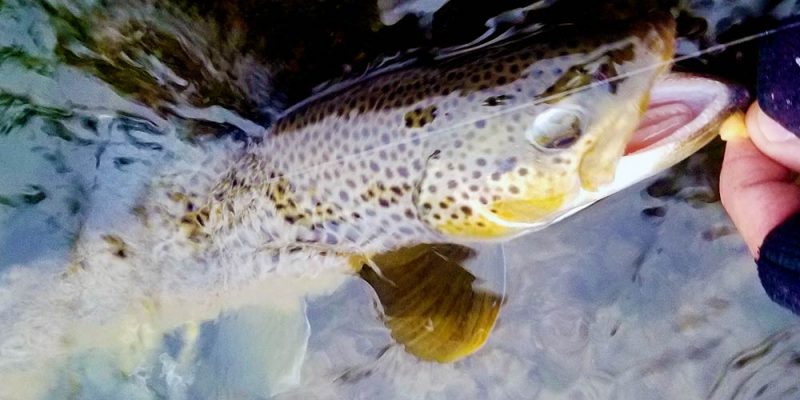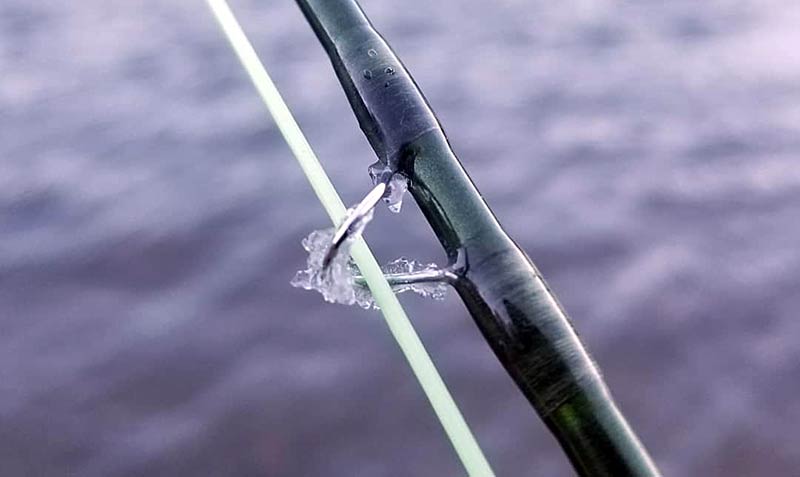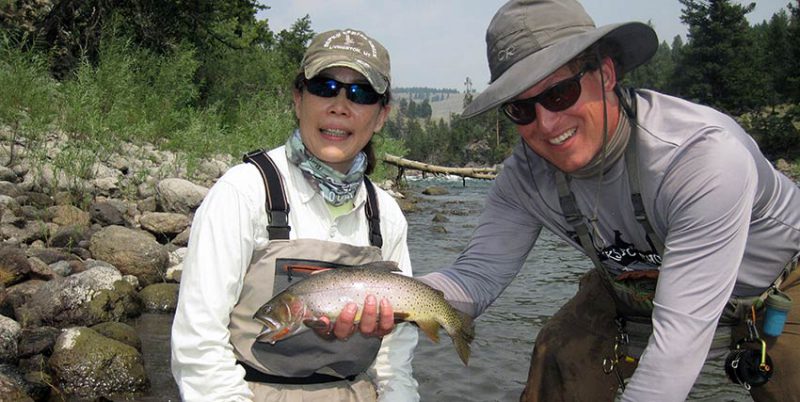Late Fall Yellowstone Fishing Trips
Posted on February 1st, 2021
Introduction to October Fishing Trips in Yellowstone
Late fall begins when the first extended cold weather hits, usually around October 1. October fishing in Yellowstone is not for the faint of heart, but it is fantastic for the right anglers in the right places.
While fewer waters fish well at this time than earlier in the year, simply because most waters are already at winter-low flows and have cold water temperatures and lethargic fish to match, those that do fish well at this time fish really well.
The best waters are those that host fall-run brown trout, though nowadays we often focus on the non-spawning trout that follow the brown to eat their eggs and the bugs their spawning behavior disturbs, rather than the browns themselves, both to avoid stressing actively-spawning trout and to avoid the crowds the spawn can bring to the best areas.
That said, the largest numbers of “big brownies” are present in late fall, and unlike in late summer and early autumn it’s seldom necessary to get on the water early if you want to chase these fish.
On the other hand, the weather can be horrendous, with heavy snow and temperatures in the teens more than feasible by this late in the year. As noted above, many waters are simply too cold to fish well by October. An additional unwelcome development in recent years is massively-increased guiding and fishing pressure targeting fall browns, which is one reason we now spend more time chasing the non-migrants on brown trout rivers, since these fish fall between the cracks a bit.

Full confession: I caught this one. Despite the good fishing for large fish, business falls off in late fall. Fewer people want to visit Montana when it might be 20 degrees and snowing, I guess. I’m not alone among Montana outfitters in that I do a high percentage of my own fishing in late autumn.
Important Note on Fishing Ethically During the Brown Trout Spawn
The brown trout spawn begins around October 15. We target browns more aggressively beforehand, since we can be certain we aren’t pursuing active spawners or damaging spawning areas.
After October 15, shallow areas with fist-sized rocks and gravel and steady currents fill with brown trout that are actually settling down to make the next generation. It is unethical to fish in these spawning areas and extremely destructive towards the next generation to do so. We never fish for actively spawning brown trout on our Yellowstone guided trips.
Any guide who does so is unethical and unprofessional and does not deserve your money. If you decide to fish spawning areas on your own, expect thorough tongue-lashings from anglers who fish ethically who happen to see you doing it.
If you didn’t know better about fishing for wild actively-spawning brown trout before reading this, now you do.
There’s no reason to worry: the deep pools and turbulent boulder-bottomed water where the big browns rest on their journeys to their spawning areas hold plenty of fish right up until the park closes. These include both pre-spawn fish on their migrations and post-spawn fish that are done “doing the deed.” Rest assured you can still catch big fish without fear of stressing the active spawners.
Early Fall Yellowstone Fishing Trips
Posted on February 1st, 2021
Introduction to Early Fall Yellowstone Fishing Trips
Early autumn in Yellowstone, generally meaning the month of September after nights start getting cold but the first heavy low-elevation snows have not fallen, offers the widest range of fishable waters of any season. Except for most small streams, which get too low and cold, virtually all water in Yellowstone Park can fish well in early fall.
For those who like match-the-hatch mayfly fishing, this is an ideal period, since mayfly hatches abound on all larger streams. It’s also a good chance for those who are willing to get out first thing in the morning or during the ugliest weather to get some of the biggest brown trout of the year.
The downsides are continued crowds near the road and inconsistent conditions. While overall crowds do decline, especially after September 15, these crowds slant older and less-fit, which means that the roadside easy-access streams can be more crowded now than earlier in the season, especially when the weather is nice.
Speaking of the weather, it might be beautiful and sunny or spitting bitter cold rain or snow. These varying weather (and water) conditions also mean that on our early fall Yellowstone fishing trips we have to play where and how we fish by ear, based on what fishes well given the day-to-day or even hour-to-hour conditions.

When you start seeing ice in your guides at dawn, it’s time for early fall fishing in Yellowstone.
Late Summer Yellowstone Fishing Trips
Posted on January 31st, 2021
Introduction to Late Summer Yellowstone Fishing Trips
Late summer, which begins in late July or early August and continues until the first cold nights in late August or early September (henceforth just called ‘August’), continues to offer excellent hike-in fishing, and both the hikes and the wading are usually not so onerous at this time as in early summer. In addition, this is prime time for small, rough mountain creeks that might still be too high in early summer. Regardless of locale, August Yellowstone fishing trips are excellent bets for anglers who like fishing terrestrial dry flies, and can turn out some big fish on subsurface flies, as well.
The downsides of late summer are continued crowds, especially on famous waters that flow through meadows, and potentially low, clear, and somewhat warm water than might mean we have to start fishing early in the morning and quit at midafternoon to avoid stressing the trout. The latter issue is much more common during drought years.

The Black Canyon of the Yellowstone remains a key hike-in destination on our August Yellowstone fishing trips. This fish ate a grasshopper.